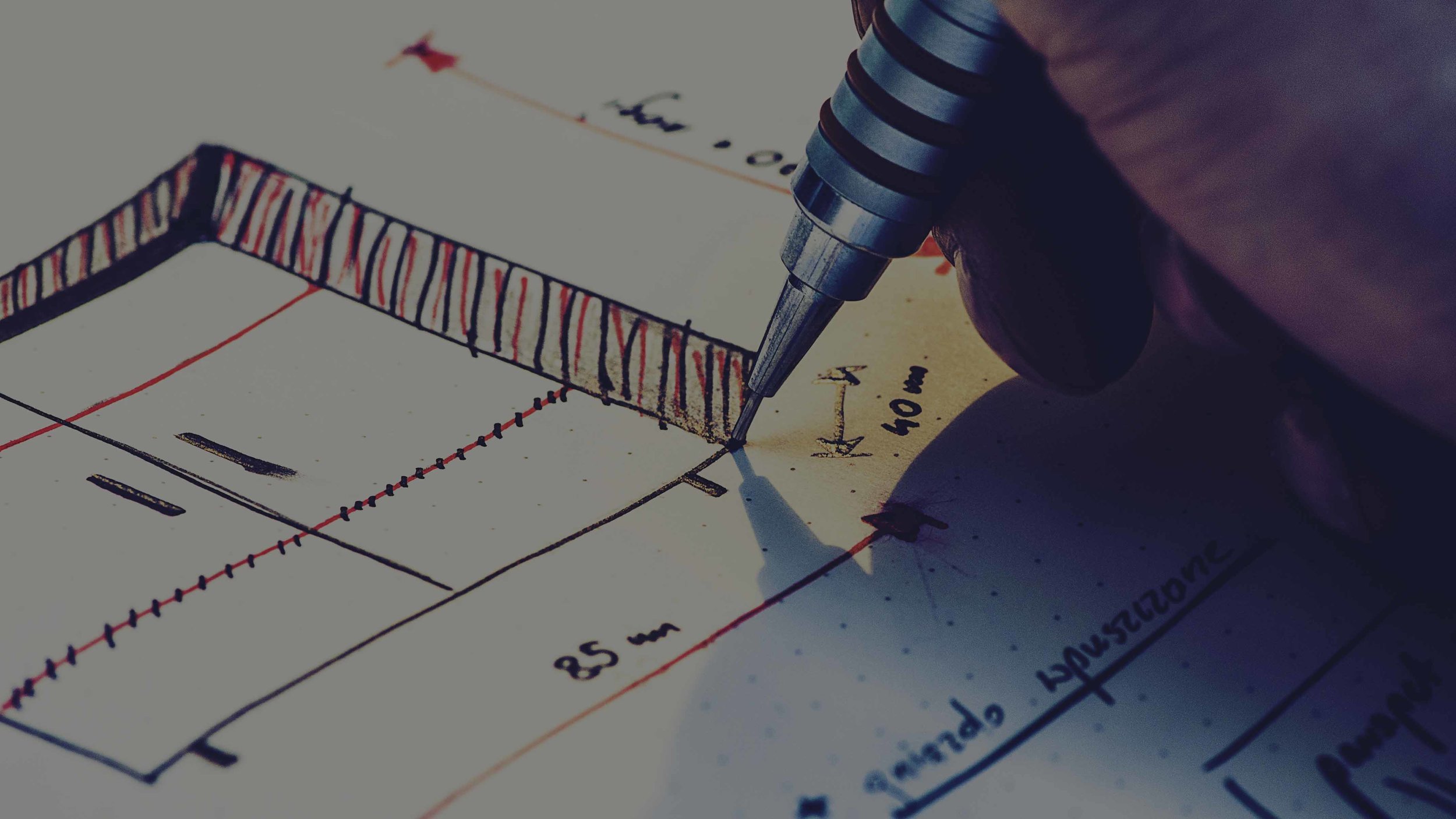Design, PRODUCT
& User Experience.
“The best way to predict the future is to create it.”
DESIGN
As a DESIGN | MEDIA ARTS major and Film minor at UCLA, I spent a fair amount of time collecting all kinds of design artifacts, links, resources. Most designers have their own repository of go-to resources. This is mine, open sourced, so everyone can benefit from what I've learned over the years!
This should explain most things: Designer vs. Client
This should fill in any missing gaps: Brutally Honest Illustrations on Designers
200
DESIGN DEFINITIONS
Naming a few of the lesser known...
Affordance
Creating a visual cue to let users know something exists, and/or
when a control behaves as its appearance suggests. Something that has zero affordance is the right-click menu. On the screen, you have no idea what menu options may be available.
Heuristic evaluation is a usability inspection method that helps to identify usability problems in the user interface (UI) design. Think of it as a series of rules/tests you challenge a user experience with to understand if it's consistent and intuitive. Heuristic evaluations reveal where user experiences fail or break down.
Human Computer Interaction (HCI) involves the study, planning, and design of the interaction between people (users) and computers.
Human Factor Design
The multidisciplinary study of human biological, physical, psychological, and social characteristics in relation to environments, objects and services. Most commonly, this is typically concerned with ergonomics.
Low-fidelity prototype e.g. napkin drawings
A quick and easy translation of high-level design concepts to help quickly communicate framework or ideas. These may be sketches, drawings, shapes, paper cutouts etc.
High-fidelity prototype e.g. polished accurate product mockups
A prototype which is quite close to the final product, with lots of detail and a good indication of the final proposed aesthetics and functionality.
Experience Map
A visual representation of all the different navigation paths of your users’ interactions patterns. This might resemble something like a massive family tree, organizing what branches and connects to what - illustrating the full picture of how people may move around the experience.
Contextual enquiry
Interviewing users in the location that they use the website or app, in order to understand their tasks and challenges.
210
THEORIES
& CONCEPTS
The Innovator’s Dilemma [book]
The Innovator’s Solution [book]
The MAYA Principle [incremental changes]
The Gestalt Principles Additional [visual perception]
Creativity: The Psychology of Discovery and Invention [book]
Channeling Cialdini’s principles [article]
The Dunning-Kruger Effect [article]
Macro vs. Micro UX [article]
220
APPROACH
& METHODS
221 - USER-CENTERED
Nielson’s 10 Heuristics [framework for usability studies]
Creating Empathy [article] Gang Leader for A Day [related book]
Gamestorming [design method]
Analytical UX Frameworks: AEIOU [design method]
The Art of Facilitation [book, essentials to meetings & group synergy]
222 - INCLUSIVE DESIGN
223 - TOOLS
Framer - Interactive Design Tool (MacOS)
Boords.com – Storyboarding Tool
Figma.com – Collaborative Interaction Design
Draw.io – Free Online Flow Chart Tool
Axure – Free Trial (or register a student account)
Axure Free UX Templates – Axemplate – awesome low fidelity wireframe
230
“PRODUCT”
What is a “Product Manager”?
231 - DEFINITIONS
A product manager’s job [Josh Elman]
UX and PM [Usability Counts]
What does a product manager do? [Brent Tworetzky]
What exactly is a product manager? [Martin Eriksson]
What does at product manager do? [Geoffrey Keating]
232 - COMPANY VARIATIONS / CULTURE DIFFERENCES
PMs at Google
PMs at LinkedIn
PMs at Facebook
PMs at Microsoft
PM at Microsoft by Steven Sinofsky - OG Windows
PMs at Twitter
233 - FRAMEWORKS
234 - The PM INTERVIEW
Cracking the PM Interview by Gayle McDowell & Jackie Bavaro
Decode & Conquer by Lewis Lin
Interview Math by Lewis Lin
The Product Manager Interview by Lewis Lin
Case in Point by Marc Cosentino
Case Interview: 20 Days to Ace the Case by Destin Whitehurst & Erin Robinson
Swipe to Unlock by Parth Detroja, Neel Mehta, & Aditya Agashe
The PM Interview: Trove of practice problems to try and time yourself against or practice with a friend
PM Lesson by Stephen Cognetta: Another website with sample problems and very thorough explanations.
240 - DESIGN DOCS
Objectified (trailer) 1 hour 15 minutes
Jeremy Scott, the People’s Designer (trailer) 1 hour 48 minutes
241 - DESIGN VID CLIPS
Mimicking Nature in Design (VOX YouTube Mini) 6 minutes
Your Business Card is Crap (YouTube) 2 minutes
This guy is totally nuts, but a design teacher showed me this in high school, and to date it has made an impression, so it was pretty darn effective!
240
DOCS & CLIPS
Stanford Crash Course 90min Design Thinking [free class]
UXforChange.com – A UX mentor exchange non-profit (meant for students, designers)
UW Human Centered Design & Engineering Certificate [night classes available for Seattleites]
250
CLASSES
261 - Creative Thinking (A handful I've encountered...)
262 - UCLA DMA Alumni Founded Agencies (Go Bruins!!)
263 - Advertising / Print
260
AGENCIES
270
VISUAL INSPIRATION
271 - DESIGN SITES
Show Us Your Type – Where world cities and typography meet. Stunning art from around the world – see how people interpret their cities culture.
Things Organized Neatly – where my mind rests in peace and calm
272 - RANDOM COOL TECH SHIT
AI Videos https://www.synthesia.io/
280
FREE ASSETS &
RESOURCES
291 - The Public Domain Project
A free database of anything and everything that’s public domain
Read more about it from
292 - FREE STOCK PHOTOS
293 - FREE FONTS
Headline Fonts (designm.ag.com)
294 - FREE PHOTOSHOP ASSETS (List of 15)
PremiumPixels (PSDs, Icons)
PSD Explorer (Graphics, Icons, Assets)
365PSD (PSDs, Icons)
Design Instruct / Free (Graphics, Icons, Samples)
Purty Pixels (Assets, Graphics)
Bazaar Designs (Vectors, PSDs, web templates)
Free Vectors/Icons (all-free-download.com)
Map of the World Vector (designm.ag.com),
Map of the World Vector MORE (speckyboy.com)
Info Graphic Kid – Basic (PixelKit.com)
295 - FREE AUDIO SAMPLES
296 - PAID UI TEMPLATES
297 - TUTORIALS
‘Saving for Web‘ (Photoshop export settings explanation)
290
Tech & Privacy
Where to next?

